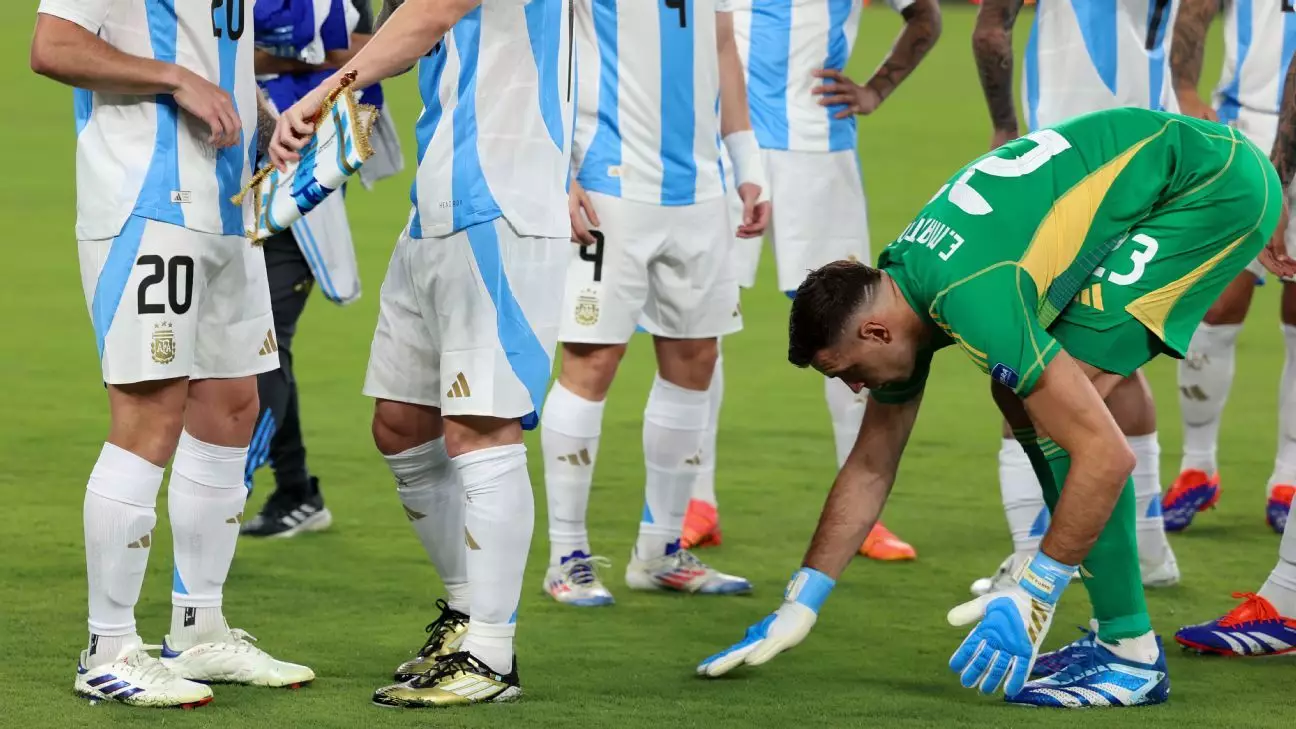As we gear up for the much-anticipated 2026 World Cup, hosted jointly by the U.S., Mexico, and Canada, FIFA has laid out an ambitious plan to expand the field by 50% and host matches in 16 cities across three countries. The spectacle of football will be spread out over different climates and elevations, presenting a unique challenge for ensuring top-notch playing surfaces in all venues.
Learning from Past Mistakes
The importance of a quality pitch came to light during this summer’s Copa América, where players and coaches alike criticized the shaky surfaces. Argentina’s goalkeeper, Emiliano “Dibu” Martínez, went as far as calling the grass field a “disaster” after encountering issues in the opening match. Such feedback has underscored the need for meticulous research and preparation to avoid similar mishaps at the upcoming World Cup.
To address the challenge of creating the perfect pitch for the 2026 World Cup, FIFA partnered with turf experts at the University of Tennessee and Michigan State University. These institutions have a long-standing reputation for turfgrass science and management, making them ideal collaborators for ensuring top-quality playing surfaces across all venues. This partnership aims to leverage years of research and expertise to avoid any shortcomings in the turf quality.
Addressing Climate Variability
With matches spanning from Mexico to Canada, climate change poses an additional variable to consider when planning the playing surfaces for the World Cup. Turf experts are exploring various grass varieties that can withstand the diverse climate conditions and deliver optimal performance throughout the tournament. These efforts include developing new grass varieties that offer improved heat, drought, disease, and wear tolerance to ensure a consistent playing surface across all venues.
Both the University of Tennessee and Michigan State University have invested in cutting-edge facilities to research and test different types of playing surfaces. Tennessee’s shade house allows researchers to replicate indoor stadium conditions, while Michigan State’s innovative approach involves growing turf on plastic instead of soil to enhance performance on stadium surfaces. By testing how the natural surface responds to ball bounces and cleat interactions, these institutions are pushing the boundaries of turf innovation to deliver an unparalleled playing experience for the 2026 World Cup.
Looking Towards a Flawless Tournament
As the countdown to the 2026 World Cup begins, the goal is clear: to ensure that the playing surface is not a topic of discussion during the tournament. By leveraging the expertise of turf specialists and conducting extensive research, FIFA aims to set a new standard for pitch quality at international football events. With a focus on innovation, sustainability, and performance, the 2026 World Cup promises to showcase the best of turf technology and expertise on a global stage.

Leave a Reply